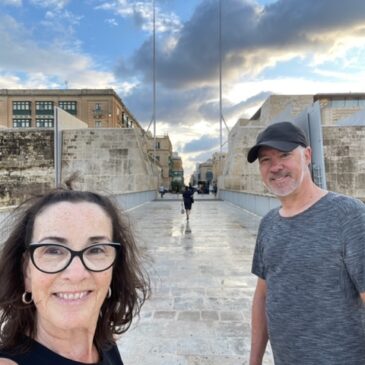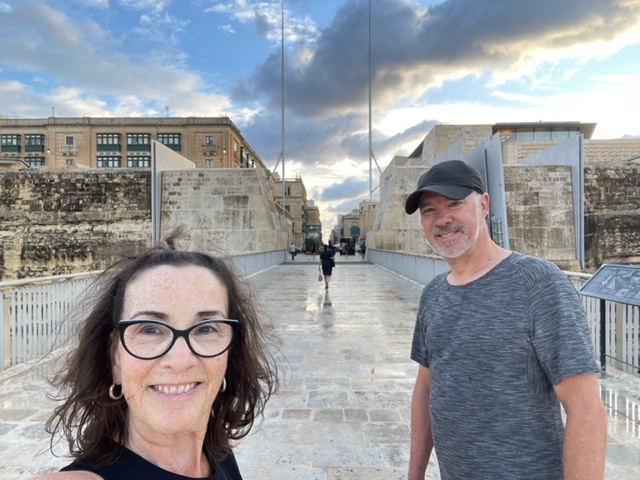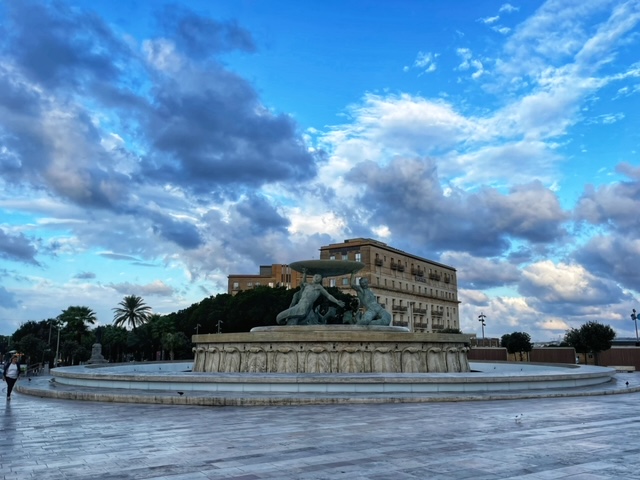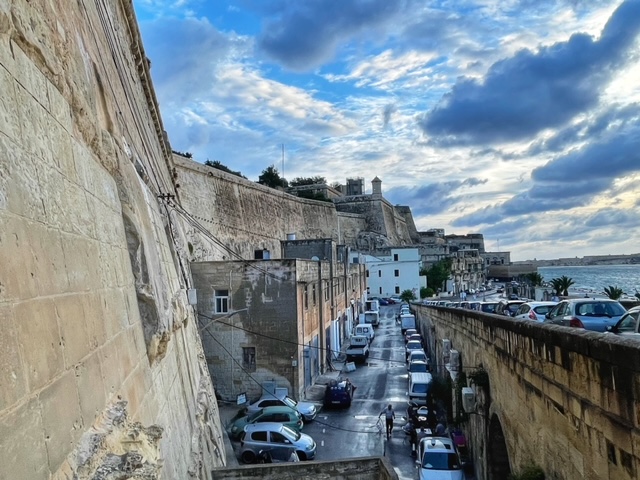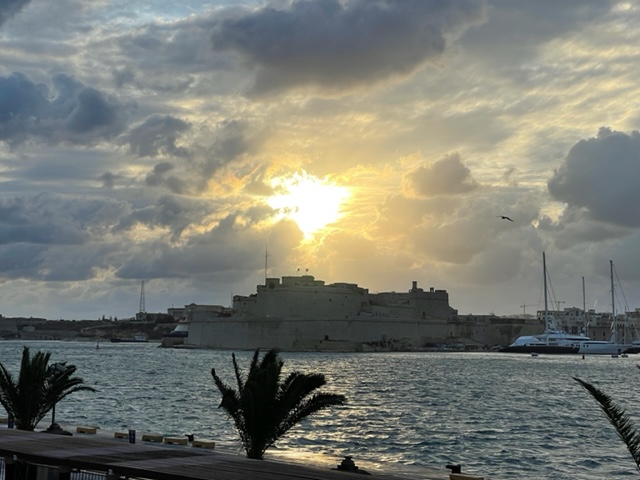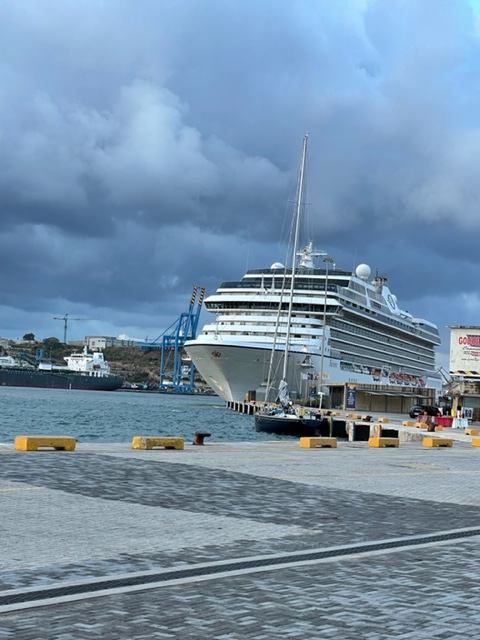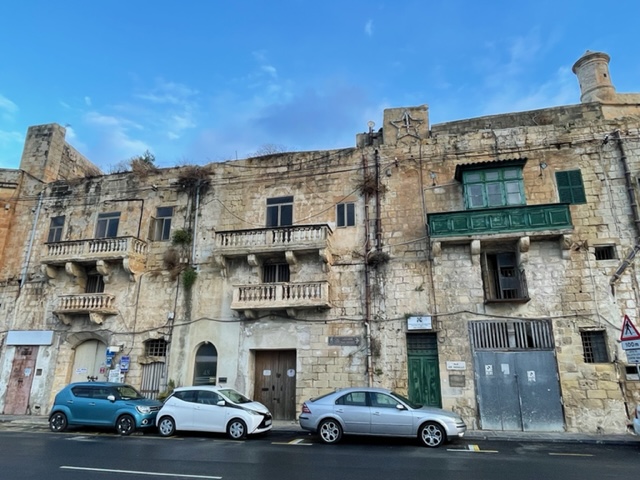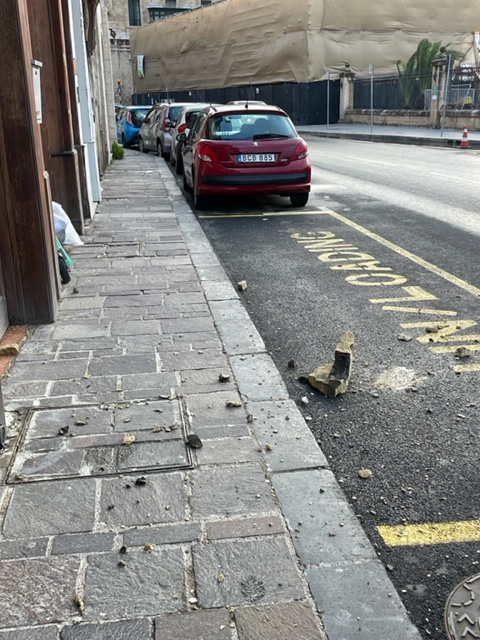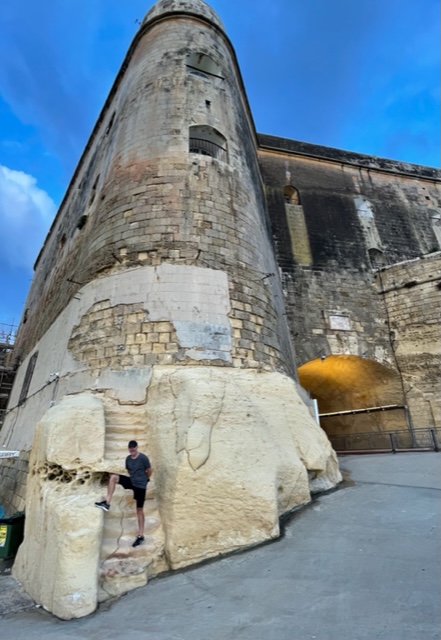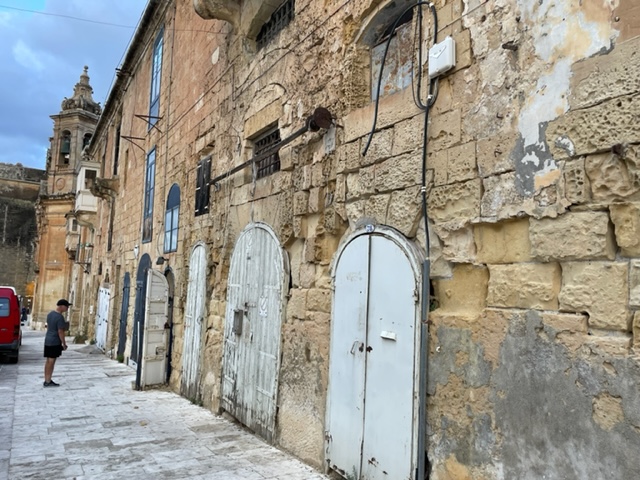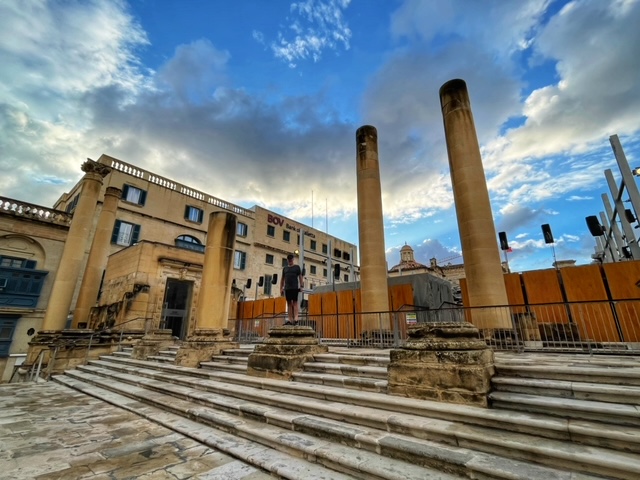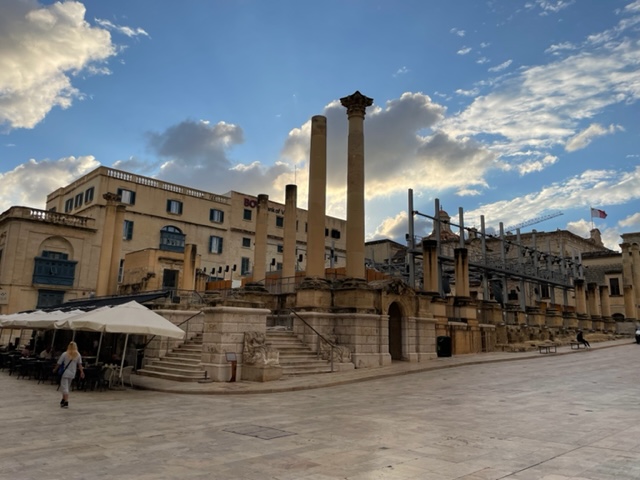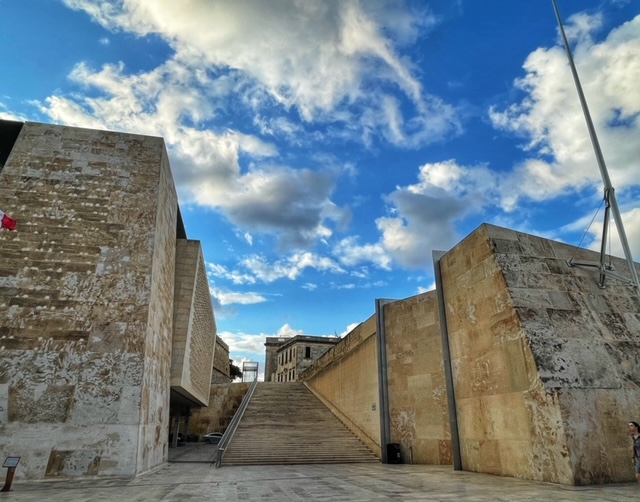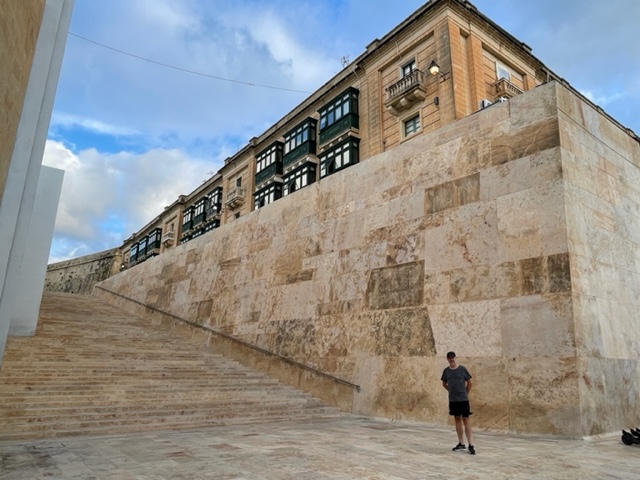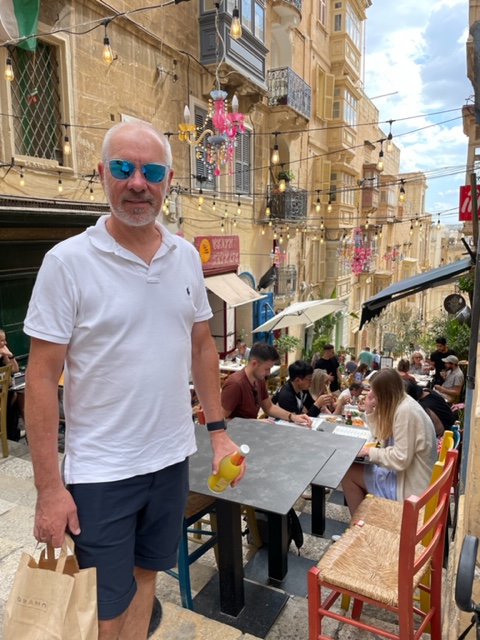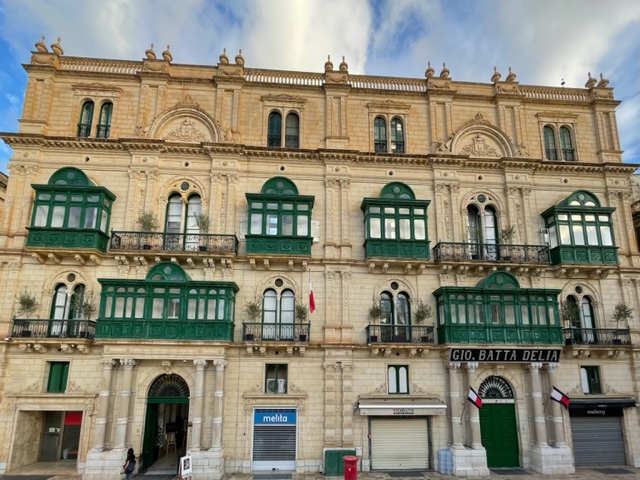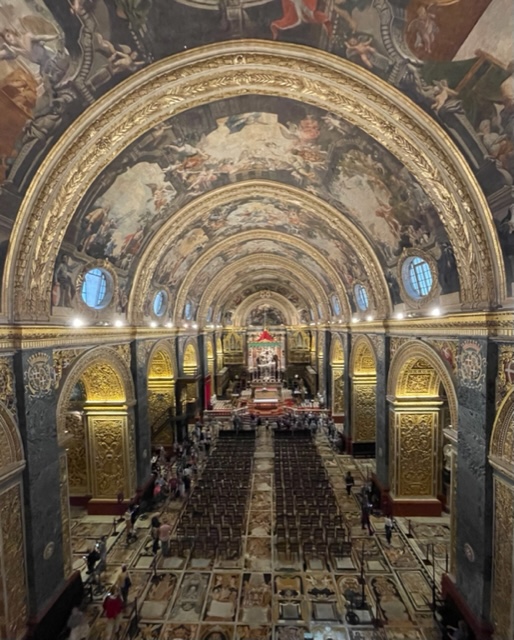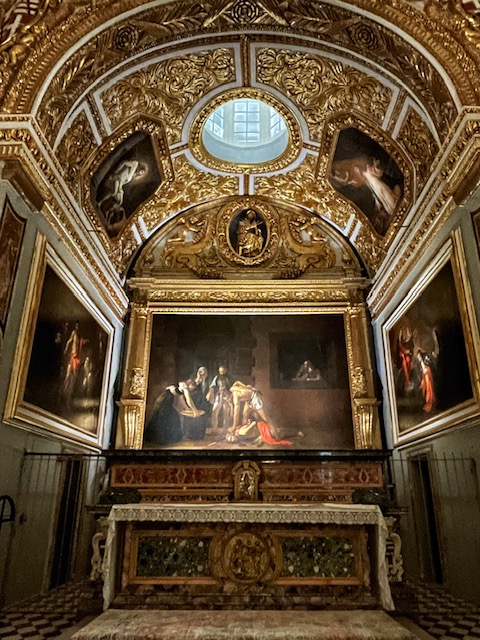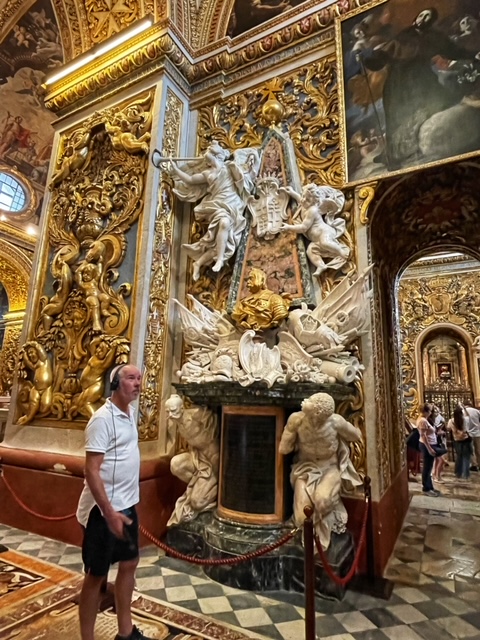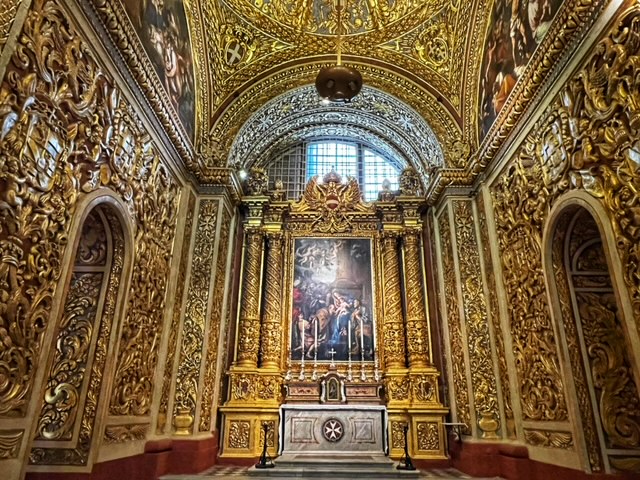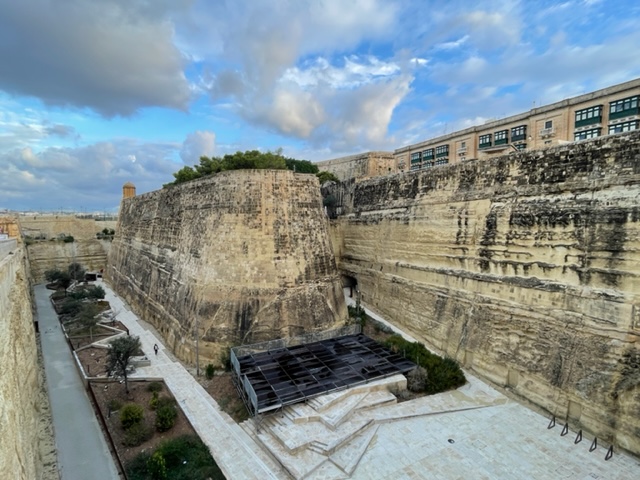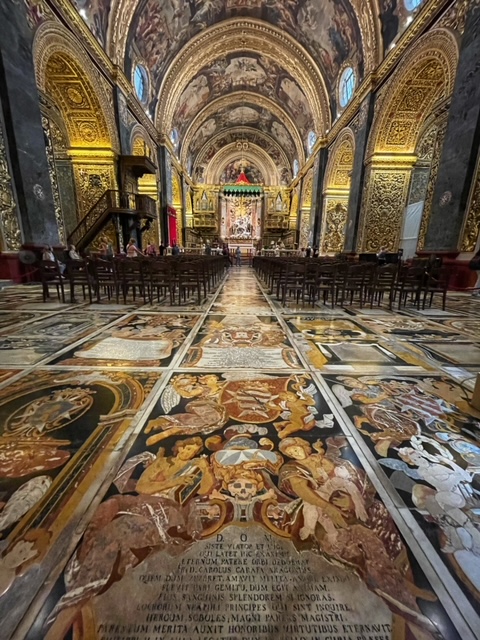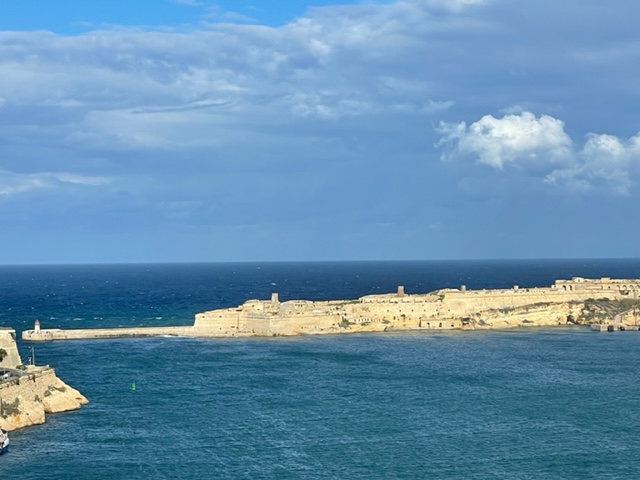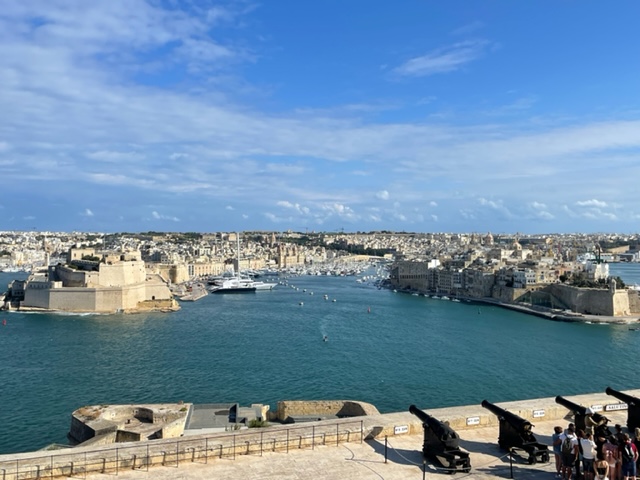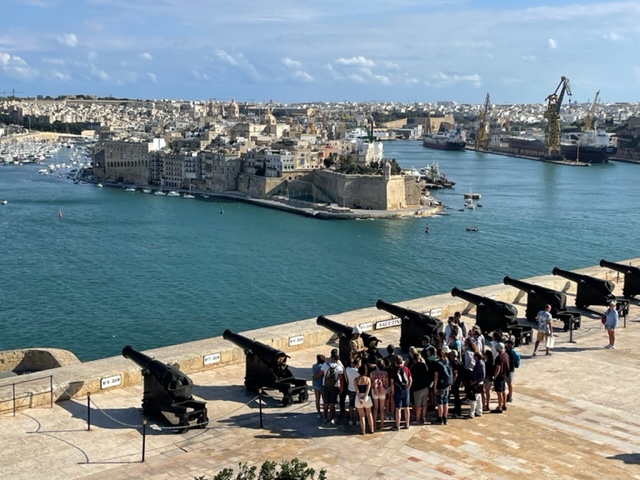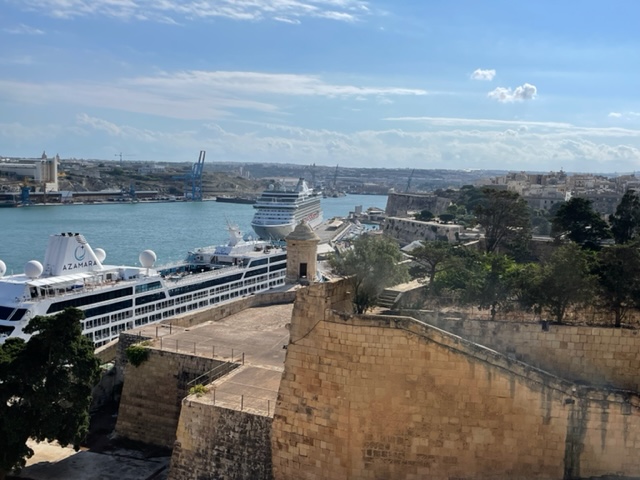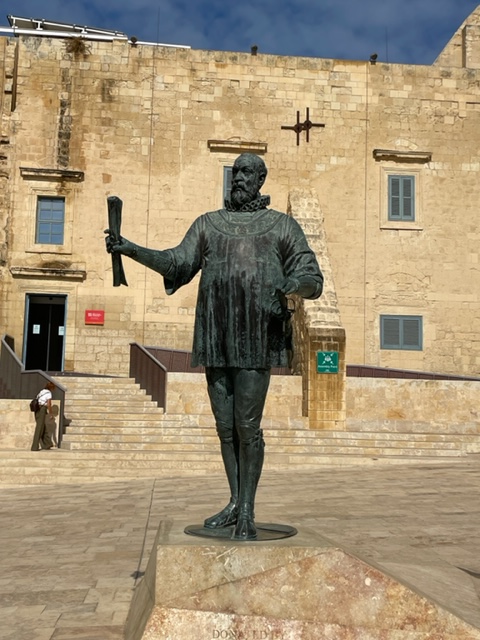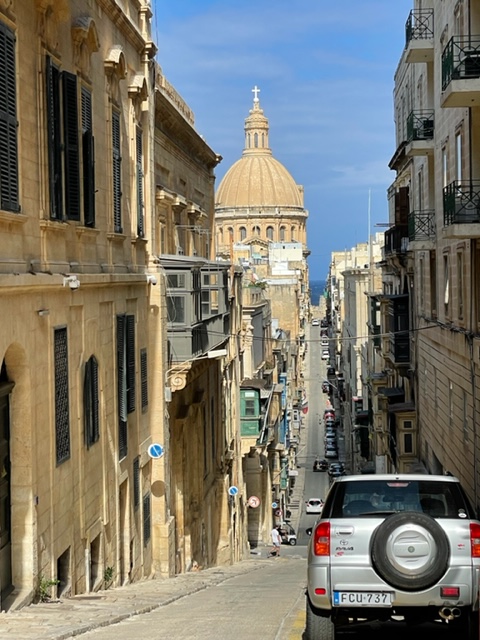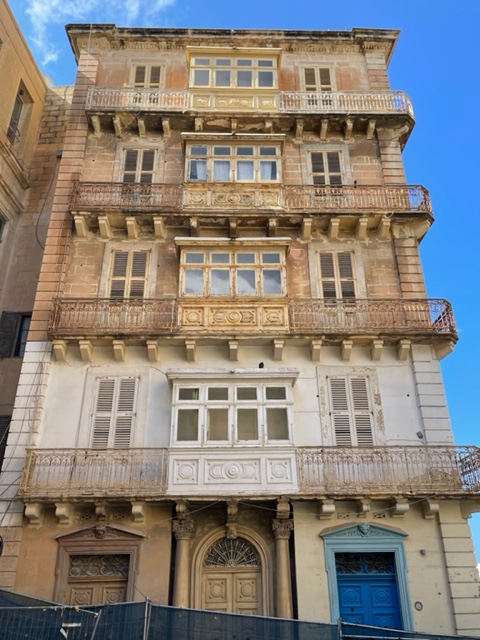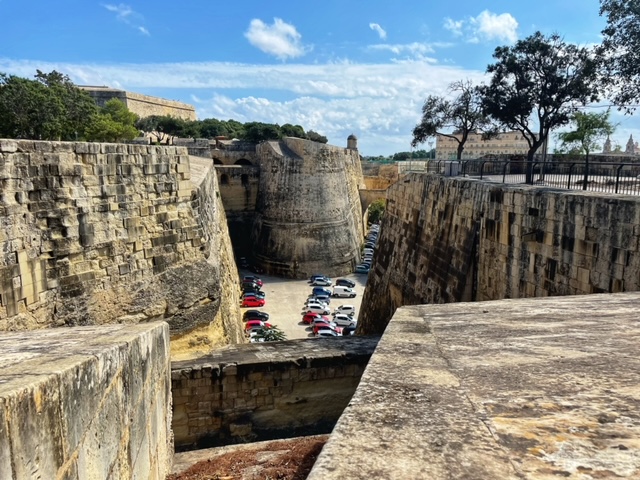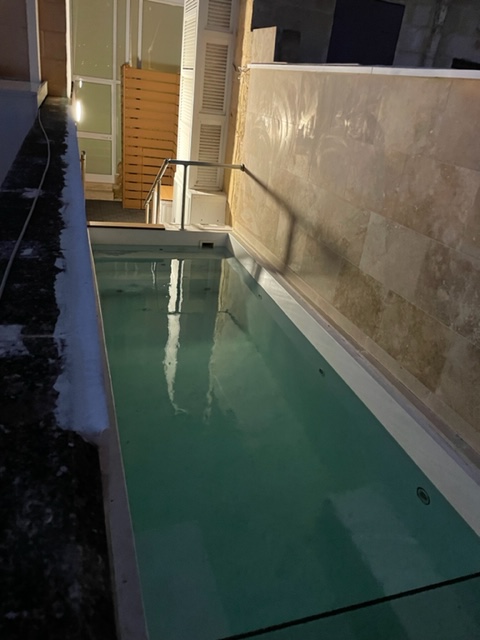Malta: Wed Sept 21 – Thurs Sept 29
Accommodation link.
Friday 23nd September
There were storm clouds about this morning but, thankfully no rain so we managed to get in a morning walk. We headed down towards the ferry terminal and out to the main pier, where the large cruise ships dock, and then on up many stairs to the city gate. Valletta is a hilly peninsula so keep that in mind if you ever plan to visit. We noticed a lot of crumbled limestone along many of the footpaths, some of the chunks being rather large, and pondered the hazard associated with our walk.
The sun came out by the time we got home and so we decided to try for the Cathedral again before our afternoon walking tour. It is called a Co-cathedral since it shares the seat of the Roman Catholic Archdiocese of Malta together with the older Cathedral of Saint Paul in Mdina. Despite getting there just after the opening time of 9.30 am there was already a bit of a queue and we were a bit surprised to see the relatively high entry fee of 15 euros. On entry though we could see the appeal of the Cathedral, it was most sumptuously decorated, in stark contrast to the humble exterior and this was apparently the intention, and is considered to be one of the finest examples of high baroque architecture in all of Europe. The Cathedral was commissioned in 1573 and built by The Knights of Malta, a group initially dedicated to helping pilgrims but that gathered momentum with the 11th Century crusades when Jerusalem fell to the Turks. The Knights took a greater military role after this siege and they were gifted Malta to build a defensive citadel. Most striking was the highly ornate 17-18th century marble floor, entirely given over to tombstones, and Caravaggio’s only signed art work of the beheading of John the Baptist. Caravaggio had a rather chequered past and was eventually defrocked and expelled from the Knights of Malta in the Oratory, in front of the altar where his famous painting hung and still hangs today. We spent about 90 minutes at the Cathedral and I would definitely recommend a visit if you’re ever in Valletta.
- the Maltese are a fairly conservative and compliant group: divorce was only permitted in 2011 following a referendum that scored just 53% and they had one of the highest Covid compliance rates in Europe. Ben said they didn’t need to be told to lock down; they all locked themselves down!
- the two major political parties are essentially both Centre-left.
- The Maltese are generally quite politically active with the previous election recording a 92% turnout but the most recent election in March 2022 only achieved an 85%turnout; the lowest in a while.
- the population of Malta is around 500,000 Malta with only about 400,000 being Maltese and only around 6,000 residing in Valletta.
- Valletta was established by the Knights of St John 1571 following the Siege of Malta. Mdina had been the old, inland, capital of Malta but the Knights of St. John moved the capital to Valletta to be near a harbour.
- The Knights of St John were initially devoted to helping people with illness, hence we still have the St John’s Ambulance reference, and only became more militarized during the Crusades and later with the Siege of Malta.
- Valletta was named after one of the leading Knights, Jean de Valette; who led the successful defense in the siege of Malta against the Ottomans.
- Queen Elizabeth II had resided in Malta from 1949-1951, when she was still just a Princess, and was there due to her husband, Phillip’s, naval deployment. She is quoted as saying that the years spent in Malta were some of the happiest of her life.
- The British ruled Malta from 1800-1964.
- Carob plants are fairly abundant in Malta and the peas, within the pods, are a fairly consistent weight so where used by the Arabs as a unit of measure for gold and other items and, hence, the term ‘carat’ was derived from these pods.
- Fort Ricasoli was used to film Gladiator, much of Game of Thrones and Napolean. We even saw the pub where Oliver Reed drank himself to death and heard how they had to edit earlier film footage to try and script him out of Gladiator.
